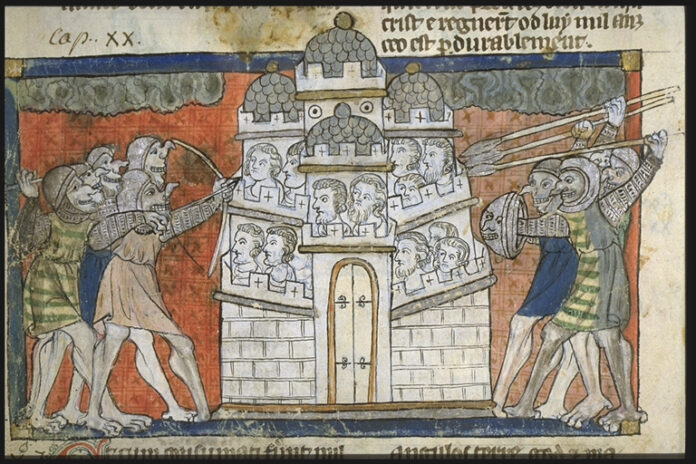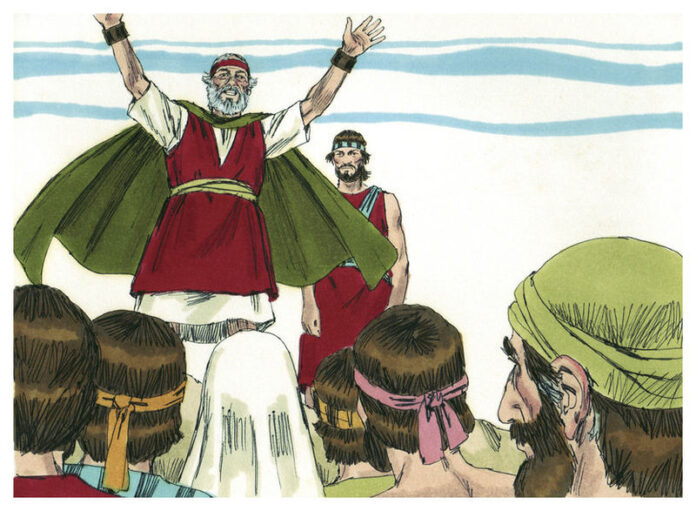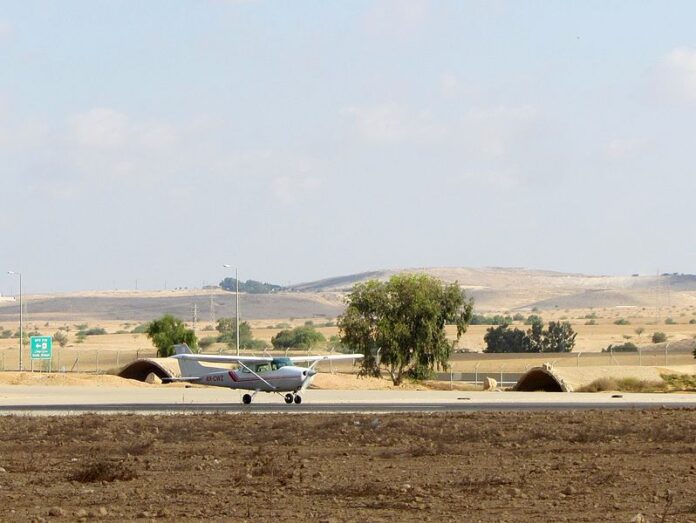I am a former graduate and have an interest in theology, history and anthropology, with a particular interest in the diverse biblical identities that were said to have populated the Black Sea and Caspian Sea regions, and their tribal dynamics and migrations.
I have written a paper on the above subject matter, which is a textual comparative analysis that explores the theological, historical and ethnographic parallels, which existed between these tribal identities, that had once resided on either side of the Caucasus. Thus, please find my paper attached as an article submission, for your kind attention, in ‘TXT’ format.
Furthermore, this essay is an excerpt from the revised version of a study paper, which I originally wrote a year ago titled, ‘The Semantics, Phonetics and Etymology of the Terms, Indigenous, Native and Aboriginal, Re-Examined and Placed into Historical Context’. Recently, I found cause to review and enhance much of its contents, and thus I felt it was a good time to promote it again, as a valued piece of academic research.
‘Gog’ and ‘Agag’, and the Pale of Settlement – A Morphological Comparison and Contemporary Example’ (Short Excerpt), by Awal Akhar – January 2024.
AWAL AKHAR, BSc (Hons)
JANUARY 2024
29.01.2024; Ver 1
Copyright © 2024, Awal Akhar
“GOG” AND “AGAG” – A MORPHOLOGICAL COMPARISON
In this respect, it is incredibly ironic and uncanny, how the historical geographical maps, which depict the ancient migration routes of the Hittite-Amorite hordes, that ‘snaked’ its way from the Nordic peninsula (proto-Scandinavian) and Baltic Sea (“Mare Suevicum”) towards the Black Sea (“Pontus Euxinus”), in the early-2nd millennium BCE, exactly matches the geographical maps that pictorialized the Pale of Settlement, in Eastern Europe, during the 18th to 20th centuries CE. This important observation may not be a mere coincidence, but may instead prove to be of a great significance. Puzzlingly, recent translations and commentaries of biblical texts have marked out the people of this particular region through a tit-for-tat, inescapable association, with the religious stories that narrate the, “grudge of Cain”, “drudgery of Ham”, and “trial of Job”! If that wasn’t enough to condemn an entire population, this same setting around the Pale of Settlement has also been conveniently associated with a later biblical identity, that of the infamous people of “Gog and Magog”!
However, in the earlier story line of scriptural events, this particular biblical identity has not been described as having any negative characteristics, but instead belongs to the genealogy of the sons of Noah, i.e. Shem, Ham and Japheth (Gen. x. 2-5, I Chron. i. 5-7). This is in total contrast to later theological literature! So why was the variant term “Gog” later paired up with “Magog”? Further, why was this term, “Gog and Magog”, subsequently demonized in later literature? The first unique term, “Gog”, is found very sparsely in the Tanakh (Hebrew Bible), and only in two places as, “Gog, chief prince of Meshech and Tubal” (Ezek. xxxviii. 2-3, 14, 16, 18, ib. xxxix. 1, 6, 11, 15; ‘G-V-G’, “גּוֹג”), and “Gog”, a son of Joel a Reubenite (I Chron. v. 4; ‘G-V-G’, “גּוֹג”). Here, a serious consideration must be given by the conscientious reader, that this particular biblical identity may have been conflated for geopolitical purposes, with a more sinister, biblical identity, which has been repeatedly warned against, in a number of places in biblical scripture. At first glance, this has been crudely done to deliberately conflate the biblical identity ‘Magog’, with a conflicting identity associated with ‘Amalek’, ‘Agag’, ‘Agagites’ and ‘Haman’. Here, there seems to be a chronological mistake in relation to this setting (anachronism), together with a subtle difference in the spelling of these proper nouns (orthographical error). However, even this unfriendly identity, as found in biblical scripture, to begin with was rather middle-of-the-road, having neutral associations with neighbouring tribal groups, such as the ‘Hivites’ (Shechem, son of Hamor), ‘Ammonites’, ‘Moabites’, ‘Hittites’, ‘Mount Ephraim’, ‘Horites’, and even the ‘Edomites’. Later, the Amalekites are mentioned in the Book of Exodus, battling against the Israelites in the desert (Ex. xvii. 8-16). A further reference is made in relation to the Israelites encounter with Balak and Balaam, the son of Beor, after they had confronted the Amalekites, in the Book of Numbers (Num. xxiv. 7, “מֵאֲגַג”). They are then mentioned again in the Books of Samuel, during another battle with the Israelites, where their king was mentioned as, “Agag” (I Sam. xv. 8-9, 20, 32-33). Their last appearance occurs in the Book of Esther during the exile of the Israelites, and the episode with ‘Haman the Agagite’ (Est. iii. 1, 10, ib. viii. 3, 5, ib. ix. 24).
Furthermore, this incorrect association has somehow crept into the extra-scriptural texts of neighbouring religious books, namely the Qur’an, and has been reinforced in its writings, in both the translations and commentaries, i.e. ‘The Cave’ [Al-Kahf] 18:95, and ‘The Prophet’ [AL-ANBIYA’] 21:97. For example, some of the groups mentioned above, have been oddly associated with the generations of Ham by some commentators, presumably for self-serving purposes, which are based on personal interests and political bias. However, when analysing the orthography of these identities, through a comparison between the Hebrew and Arabic textual sources, this confusion can be explained and possibly reconciled with the original meaning, e.g. as mentioned above in, Num. xxiv. 1-25. Obviously, this confusion was allowed to perpetuate itself through an ignorance to Near and Middle Eastern languages, and thus the inability to critically reappraise the text within biblical translations of the Hebrew Bible, e.g. ‘The Septuagint’ (3rd-2nd cent. BCE, Alexandria), ‘Targum Onḳelos’ (1st cent. CE, ‘Aḳylas’, Aquila), and Vulgate (4th cent. CE, St. Jerome).
Pointedly, the above description plainly contradicts an implied biblical reference to it made in ‘Mic. v. 5’, where it states that, “seven shepherds”, arose against the Assyrians. The “seven shepherds” are commonly associated with the seven “sons of Japheth”, as mentioned in ‘Gen. x. 2’ and ‘I Chron. i. 5’, which included, “Gomer, … Magog, … Madai, … Javan, … Tubal, … Meshech, and Tiras”. Here, the biblical proper nouns, ‘Madai’ and ‘Javan’, are usually, phonetically associated, with the ancient ‘Medes’ and ‘Ionians’, respectively. Importantly, these verses clearly define the lineage of ancient ‘Magog’ (‘M-G-V-G’, “מָגוֹג”), as originating from ‘Japheth’, rather than ‘Shem’ or ‘Ham’. What’s more, some linguists are of the opinion that the proper noun, “Gomer” (“גֹּמֶר”), contains an orthographic error, in respect of its middle character (grapheme)! This can be appreciated by comparing the Hebrew letters, ‘MEM’ (“מ”, in Hebrew), and, ‘SAMEKH’ (“ס”, in Hebrew), which both have very similar geometric shapes. Thus, the ethnonym, “Gomer”, may have an alternative spelling, “Göçer” (“גֹּסר”). Furthermore, some historical academics have gone as far as attempting to link this tribal identity with the ‘Göktürks’ of Central Asia (“Gök” + “türks”). Apart from being mentioned twice, in both the Books of Genesis and Chronicles, amongst the ‘Table of Nations’, Gomer is mentioned in two other places, once in the Book of Ezekiel (Ezek. xxxviii. 6), and once in the Book of Hosea (Hos. i. 3), but here as, “the daughter of Diblaim”!
Similarly, another example that clearly illustrates this common muddling-up of Hebrew letters, in repeatedly used words (proper nouns), can be observed from a set of two, identical, biblical verses, found in the Books of Genesis and Chronicles. Surprisingly, these verses also describe the early genealogy of this very same branch of Noah, i.e. the sons of Japheth. Here it can be seen that the beginning Hebrew letter(s) of two separate, proper names (ethnonyms, toponyms), have been transcribed and spelled differently for a son of Gomer as, “Riphath” (“רִיפַת”; Gen. 10. 3), or as, “Diphath” (“דִיפַת”; I Chron. 1. 6), and for a son of Javan as, “Dodanim” (“דֹדָנִים”; Gen. 10. 4), or as, “Rodanim” (“רוֹדָנִים”; I Chron. 1. 7), using either a, ‘RESH’ (“ר”), or a, ‘DALET’ (“ד”), which again have very similar shapes. Maybe something is being hinted at or emphasized here! Otherwise, both of these examples serve to illustrate that orthographical errors (spelling mistakes) do occur in Hebrew words that have similarly shaped character symbols, contained within biblical scripture, which may have crept in during the transcription stage.
As a comparison, the classical, Jewish historian, Flavius Josephus (c. 37 – 100 CE, ‘Antiquities of the Jews’), described the loose, historical link, that existed between ancient ‘Gomer’ and the recent inhabitants of ‘Galatia’, in the quote, “For Gomer founded those whom the Greeks now call Galatians (‘Galls’ or ‘Gallograeci’), but were then called Gomerites”. However, in this particular example, this historical reference can easily be taken to mean, that at that time this toponym was simply a past eponym derived from ‘Gomer’, rather than an existing ethnonym. Crucially, the misinterpretation of this ‘quote’, could serve the purpose to alter the historical record, with regards to past military alliances, that had fought together during the Trojan Wars (1260 – 1180 BCE), and many centuries later, during the Battle of Nineveh (612 BCE). This example, may help to explain why some contemporary historians have attempted to promote the “Cimmerii” (8th-7th cent. BCE), as the rightful descendants of the biblical identity, “Gomer”. However, this arguable assertion could be interpreted as a classic example of sycophancy or self-aggrandizement by members of the ‘pro-Galatian’ camp, which was promoted only recently, after WWI.
Furthermore, in some theological discussions, these ethnic groups have been mistakenly associated with the noble, historical, tribal identity, known as the, ‘Scythians’, and their correlated tribe the, ‘Sakas’, that once resided in the northern regions of the Black and Caspian Seas, in the Eurasian Steppes (comp. Jer. iv. 5-31, vi. 23). These people had a rich and legendary past history, having a Shamanistic, animistic belief system, leading both a nomadic and pastoral, agrarian and transhumant lifestyle, herding oxen, goats, sheep, and other ruminants, living in “tepee” style tents (“wigwam”), and having kurgan style burials. They were said to have been correlated to a later mentioned and well-known, historical, tribal identity, named as the, ‘Goths’, i.e. ‘Visigoths’, ‘Ostrogoths’. Surprisingly, this latter identity may be found in the ‘Table of Nations’ in the Book of Genesis, which unexpectedly places it within the genealogy of Shem. Moreover, the remnants of these particular, historical identities, are sometimes associated with later, renowned, historical groups, e.g. the Parthians, other Turanians, and certain Altaic or Sino-Tibetan groups. Consequently, it is not surprising that some questionable, contemporary, religious groups, and their suspect sponsors, have laid a false claim to this historical identity, for the sole purpose of making a dishonest, personal gain, from its ‘glorious past’ (comp. Getae, Thraco-Phrygians; Hittites, Cimmerians, Galatians).
Likewise, this questionable translation, and resulting interpretation of the Hebrew Bible, has deliberately allowed a further, flagrant misrepresentation, of the scriptural narrative to perpetuate itself, in subsequent biblical texts, i.e. in the Book of Galatians (NT; ‘Gal. iii-iv’), compare Colossiums (NT; ‘Col. iii’)! Here, a comparative example has been provided in relation to the Galatians, in letter form (epistle), through a biblical reference to “Hagar” (Gen. 16. 3; comp. ‘Hagarites’), the second wife of “Abram” (Abraham), the handmaid of his first wife, “Sarai” (Sarah), who had given birth to “Ishmael”, the patriarch of the Ishmaelites. This has been done within a narrative that discusses the status of Jerusalem, and thus the ‘City of David’ (“Zion”, II Sam. v. 7), which was once the capital of the Southern Kingdom of Judah, prior to the Assyrian and Babylonian Exiles (comp. ‘King Pul of Assyria’, I Chron. v. 26). Obviously, this biblical translation may have served a geopolitical agenda, that provided theological, or biblical justification, to stir up restless, ‘mercenary’ groups, that had daring ambitions and were ready to take off on campaign, to plunder and pillage the rich lands of the Middle East (Crusades, 11th – 13th century CE). However, one can’t help but ponder, that in recent centuries, this was taken to new levels of conquest, assimilation and annihilation, when comparing the ABO and Rh blood group distribution maps of the O-type and Rh-negative gene frequencies, with the historical record from the past 450 years of colonialism (Age of Discovery, 15th – 19th century CE; Bay of Biscay, Conquistadors, Jesuits).
These hordes of mercenaries were said to have originated from the fabled lands of perpetual darkness, beyond the ‘Underworld’ (comp. Hades and Tartarus), that once echoed from prehistory, “… Cimmeria … Cimmeria” (comp. “Ultima Thule”, Lapland, Laptev Sea; falling, “lapsus”, fall, “labi”, in Latin; flank, “lapara”, in Greek). This region was described as the ‘cursed’ lands of the north (north, northwards, “צָפֹנָה”, in Hebrew; comp. “The Tree of Zaqqūm”, ‘The Lines’ [As-Sāffāt] 37:63-75), where the ground was frozen so hard, that it was harder than horn (“keras”, in Greek; “קֶרֶן”, in Hebrew), and where only hard-nosed hunter-gatherers could survive! Here, there is a natural linguistic continuity that can be observed between the ethnonyms “[K]Hatti” and “Cimme[r]ii” (ref.: Hittites of Hattusa; “חִתִּי”, in Hebrew). This can be readily observed from a simple phonetic transition of the Hebrew letter (phoneme), ‘TAV’ (“תּ”), to, ‘TET’ (“ט”), and then to the similar, shaped, geometric letter (grapheme), ‘MEM’ (“ם”), which may have occurred through an orthographical error, possibly during transcription.
Furthermore, this reference to the “Cimmerii” (ref.: Herodotus, ‘Histories’; Homer, ‘Iliad’, ‘Odyssey’, 8th century BCE; comp. Hittites, Cimmerians, Galatians), could also include their neighouring tribes, the “Suevi” (~”Suebi”) from the Baltic Sea (“Mar Suevecum”, in Latin), and the “Cimbri” from the Jutland Peninsula (Jylland, Sjælland, Kattegat Straits [Denmark], Baltic Sea; comp. “Cymru” of Wales), i.e. Norse and Gael tribes (comp. berserker, galloglass; wiccan, witches, häxan; familiars, minions). Curiously, with reference to the “Cymru” of Wales, history academics from neighbouring countries in Western Europe, have provided a further description, that oddly compares them to “chimera” (comp. ‘Chimera’, in Greek mythology)! This may well be a tongue-in-cheek response to what they view is an overly pretentious, religious fervor, exhibited by the Welsh (‘foreigner’, “Wealh”, in Old English)! Thus, in mockery, this may be a suggestion to the biblical allusion (or interpretation) regarding the ‘vision’ of Abraham and the division of the heifer, she-goat, ram, turtle-dove, and pigeon (Gen. xv. 9-10; i.e. ‘hybrid vigor’, ‘heterosis’). Furthermore, this particular ethnic group has been infamously known for holding gatherings, where they psych themselves up into a frenzy of passions, leading up to a crescendo of melodic voices! Some have suggested, that this is their personal attempt to re-create the ‘illusion’, which is described in biblical scripture, where David and the Israelites brought the “Arch of the Lord” into “Zion”, with great effort (City of David; II Sam. vi. 1-17, I Chron. xiii. 5-14, xv. 25-28, xvi. 1-2). What is more, this is a classic example of a cultural trait, or restless tendency, within the documented ethnography, typical of the Norse and Gael people, exhibited over many centuries.
THE PALE OF SETTLEMENT – A CONTEMPORARY EXAMPLE
On a more serious note, this ‘sinister’ propaganda may have been promoted to cruelly justify the pogroms that occurred in the Pale of Settlement, during the last century (1859, 1871, 1881, and 1886), and particularly the “Shoah” during WWII. Coincidently, this is the very same location where many diverse and diligent farming communities had settled down, over the past centuries. During this era of industrial and technological revolution, many scientific advancements were made, through a systematic and methodical approach in the research and development of new inventions, which allowed complex machines and engines to be manufactured. These complex machines then gradually replaced the menial and manual tasks that had once been performed by lesser groups in society (comp. II Chron. xxvi. 15, Eccl. vii. 25-29). Supposedly, these lesser groups were freed up from the burden of their hard physical labour to pursue more refined, cultured and educated tasks in society. In spite of this, bigotry still pervaded the fabric of society, no doubt due to misplaced superstitious beliefs and religious dogmatism, which then fell prey to the schemings of charismatic and dark influences. The bigoted tribal behaviour displayed during this period, seems to be in total contradiction to what one would have expected was the innate objective and intended outcome of rolling out this industrial model (machines, engines), and the benefits that it was meant to have provided to society as a whole, as opposed to the mass disenfranchisement of these lesser groups!
It is possible that through biblical eisegesis, and even scriptural interpolation, that theological justification was obtained, to orchestrate the mass genocide of these non-aligned groups, that no longer ‘belonged’ to humanity … as if a part of a wider conspiracy! In the short term, most of these groups, had become redundant due to the relentless march towards industrialization of all parts of society, particularly in the rural, farming communities. Thus, there was a problem and need to manage this now unwanted, or less valuable, part of society. In the long term, this would have meant that an intelligent process was needed to manage the demographics of these populations by implementing political policies to ‘sift’ these sands of humanity, that were from the lower classes of society. Obviously, if that didn’t work, a ‘final solution’ could have necessitated the declaration of “war”, and thereby the chattelling of these unwanted groups, into the meat grinder of the industrialized war machine! Thus, in these circumstances, mass migration may have been the only choice of survival left, for many of these groups.
As a background, the Pale of Settlement was formed in 1791 by the Russian Imperial powers of that time. It was a vast area in Eastern Europe, stretching northwestward, from the northwestern coast of the Black Sea (Odessa), to the central-southern shore of the Baltic Sea (Kaliningrad). Historically, this area was well known as arable land, which was very suitable for agriculture. At its height it was home to many different, Eastern European, ethnic groups, which included Slavic, Germanic, Tataric, Turkic, Armenian, Jewish, and Roma communities. At that time, the Jewish population in the Pale of Settlement numbered 5 million people, which represented the largest group of this kind in the world. However, during the end of the 19th century, many families were compelled to leave this place, as there were rising intercommunal tensions, caused by ruthless and competitive interests, which made life to become very hard, impoverished and oppressive, for other, more peaceable groups. Thus there was a huge exodus of many people groupings from the Pale of Settlement after 1880, during WWI, the Russian Revolution (1917), and the Russian Civil War (1918 – 1922), prior to the mass murders of WWII, that had been orchestrated by bands of thugs affiliated to the Nazis.
In this respect, it may be important to remember that serfdom had continued in many parts of Europe, well beyond the 15th century CE, including in France, Germany and Switzerland. In France alone, it is estimated that there were well over 700,000 serfs, whose serfdom was derived from tenure, in the regions of Burgundy and Franche-Comté, during 1789 CE. It was only abolished in the aftermath of the French Revolution (1789 – 99 CE), which saw the ‘Emancipation of the Serfs’, and the gradual end of feudal society, with the violent end of the two hundred year old Bourbon-Capetian dynasty of Navarre (1589 – 1793 CE). Notably, it was only thereafter, that the ‘Abolition of Slavery’ in the British Territories occurred, with the ending of the slave trade, in 1807. This was finalised by the ending of slavery in 1833, through the dedicated campaigning of such individuals as William Wilberforce. Later, the United States would follow suit, and emancipate their slaves with the ‘Emancipation Proclamation’ in 1863, which was ratified in 1885.
Similarly, the Russian Emperor, Tsar Alexander II, decided to set the serfs free in the ‘Pale of Settlement’, as part of a modernization plan, to bring the Russian Empire into line with Western powers, in 1856. This decision had been precipitated by failures during the Crimean War (1853 – 1856 CE), and by social unrest that had accompanied this period. Thus, the abolition of serfdom had become a priority for the Russian Tsar, and a committee was formed for its emancipation, in 1857. Eventually, the ‘Emancipation Manifesto’ (Edict and Acts) was finalised, in 1861. However, this was a tenuous comprise between the self-interests of the nobility, government bureaucrats, merchant classes, and landed gentry, with the peasants being passive onlookers, during this whole deliberation! The emancipation edict, along with its legislative acts, granted the serfs, who made up ~38% of the population, the freedoms and liberties of a citizen. This would include the right to land and property, and the right to trade in goods and services, assisted by government loans and gradual land redistribution, through a ‘right-to-buy’ agreement with their landlords. By 1881, 85% of the peasant population had become small landowners, but were still hugely burdened by redemption payments. It was only after the Revolution of 1905, that all overdue redemptive payments were eventually nullified.
This occurrence coincided with the Industrial Revolution, which was a period of great economic and social change, in which methods of production underwent a massive overhaul, from small-scale manual-labour, to large-scale manufacturing, using machinery, centred around the production of coal, iron, steel, and textiles. The Industrial Revolution started in Britain (1760 – 1830 CE), and its ideas were soon exported to Flanders, France, Germany, the North Americas, Japan and Russia, during the latter 18th to 19th centuries. However, many agrarian occupations became redundant as a direct result of industrialisation, which freed up manual-labour resources, causing a mass exodus of the peasantry from rural communities to the mining communities, or the sweatshops of the growing urban centres. This led to a rapid growth of populations in cities, due to mass urbanization, and the creation of new socio-political systems and powerful corporate structures, and thereby an increasingly fervent nationalistic consciousness.
However, these various groups from the Pale of Settlement, were later vilified as the so called ‘Red Hordes’ (Freemasons, Marxists, Communists and Socialists), through media propaganda, during the Spanish Civil War (1936 – 1939 CE; Falangists vs. Republic). Thereafter, the Spanish Blue Division (“División Azul”), which was made up of Spanish volunteers (conscripts), would fight for the Nazi-German army on the Eastern Front, in the Pale of Settlement. Notably, they included men from the Portuguese Legion and Portuguese Estado Novo, who had gained previous military experience whilst fighting under the Spanish flag, during the Spanish Civil War.
Notably, it was Portugal that had initiated the European slave trade, when Prince Henry the Navigator sent a trading expedition to Africa, in 1441 CE. By 1444 CE, they had brought back 235 African slaves to Lagos, in Portugal, and by 1460 CE, Portuguese plantations off the west coast of Africa, had created the demand for more slaves. This led to the establishment of Elmina Castle on the Gold Coast (now Ghana), the first slave fort of the Portuguese slave trade, in 1481 CE. By the 17th century CE, Portugal was a major trader in African slaves, and was now supplying the newly created Spanish plantation colonies of the emerging Spanish Empire. It is estimated that the Portuguese trafficked in excess of 4.5 million slaves in total, during this time.
Importantly, this subject matter is relevant when reflecting upon the past 450 to 550 years of recent human history, and the great upheavals that have taken place during that time. That is to say, the cause and effect of industrialization and urbanization upon ‘rural’ populations, and all the major world conflicts that followed, which also included mass genocides. There is no doubt, that this occurred as a direct consequence of the mechanization of all means of production, distribution, manufacture, and trade, which came hand in hand with (un)conventional warfare, and the industrialized war machine (comp. essentialism, causality, teleology). With that most recent point in mind, one is always naturally moved to a deep place of emotional anguish and grief for all of the victims, and their families, that had experienced the trauma of uninhibited cruelty, gratuitous violence, and premeditated mass murder, which had been directed against them, as unarmed civilian populations. One also naturally wonders, what were the reasons provided in justification for such inhuman, cold-blooded, and brutal acts of violence. Was the mass slaughter of innocent civilian lives justified, simply on the basis of racial intolerance due to ethnic and tribal differences, or was it due to revenge and a past vendetta, or was there a geo-political reason, or even a theological justification, for such outright cruelty and violence? No doubt, these events were also hugely motivated by greed and the frantic ‘land grab’ that characterized those times.
CLOSING
Having observed news stories from the recent past, within newspaper articles, documentaries, and a plethora of essays on history, one is left greatly bewildered as to how tragic events in human history were allowed to have occurred. But the fact of the matter is, that they did occur, in spite of all the advances that had been made, up to those moments in time. Moreover, these were not a set of historical events that could have been simply brushed aside, as if they were a natural disaster, but can be wholly defined as manmade in character.
These closing words may seem somewhat simplistic, but if we strive to cultivate a love for the natural world, and attempt to understand the fundamentals of existence, and thus learn to appreciate its diversity, we may be able to arrive at a better understanding of our own lives. Thereby, we can learn to be more fair-minded and just in accepting, respecting and valuing, all the other ethnicities, languages, cultures and religions, that exist on our planet, in this emerging global village with its various people groupings.















